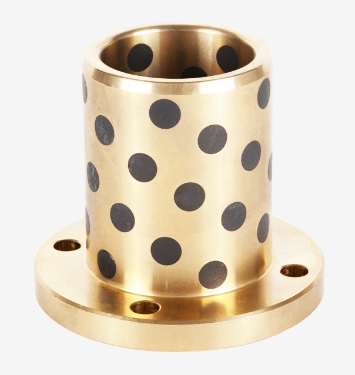When it comes to woodworking and routing, precision is paramount. One essential tool that helps achieve this precision is the guide bushing. If you’re delving into the world of routers and router tables, understanding guide bushings and their various types and applications is crucial. Let's explore what guide bushings are and how they enhance your woodworking projects.
Concept of Guide Bushing
A guide bushing, often made of brass, that attaches to the base of a router. Its primary function is to guide the router bit along a template or pattern, ensuring consistent and accurate cuts. Guide bushings are essential for template routing, where the router follows a predetermined path to create intricate shapes and designs.

Components of a Guide Bushing
The main components of a guide bushing setup include:
● Router Base: The part of the router to which the guide bushing is attached.
● Router Bit: The cutting tool that interacts with the wood, guided by the bushing.
● Bit Diameter: The diameter of the router bit, which must be compatible with the guide bushing.
Types of Guide Bushings
There are various types of guide bushings designed to meet different routing needs:
● Straight Guide Bushing: These have a straight cylinder shape and are the most common type used for general routing tasks.
● Tapered Guide Bushing: These have a tapered shape to facilitate smoother transitions and reduce friction.
● Adjustable Guide Bushing: These allow for fine adjustments to achieve precise depth control.
● Floating Guide Bushing: These can move slightly to compensate for minor variations in the template or material.
● Inner Guide Bushing: These are designed for applications where the bushing must fit inside a template.
Using Guide Bushings
To use a guide bushing effectively, you’ll need a compatible router base and a router table. Here’s a step-by-step guide:
1. Select the Right Bushing Set: Choose a bushing set that includes the brass guide bushing appropriate for your router bits.
2. Attach the Bushing: Secure the guide bushing to the router base using a lock nut.
3. Choose the Right Router Bit: Ensure the bit diameter matches the guide bushing's inner diameter for a precise fit.
4. Set Up Your Template: Place your template guide on the workpiece.
5. Start Routing: Follow the template guide with the router bit, using the guide bushing to maintain the correct path.
Applications of Guide Bushings
Guide bushings are versatile and can be used in a variety of woodworking tasks, such as:
● Creating Inlays: Achieve precise inlays by following a pattern.
● Duplicating Shapes: Reproduce identical shapes from a master template.
● Dadoes and Grooves: Cut straight and consistent dadoes and grooves.
Choosing the Right Guide Bushing
When selecting a guide bushing, consider the following:
● Material: Brass guide bushings are popular due to their durability and smooth operation.
● Size: Common sizes include a 5/8” OD (outer diameter), which is standard for many templates.
● Compatibility: Ensure the bushing is compatible with your router and router table setup.
Drill Guide Bushings
Apart from routing, guide bushings are also used in drilling applications. A drill guide bushing helps maintain straight and accurate drill holes, especially useful in jigs and fixtures.
Conclusion
In summary, a guide bushing is an indispensable accessory for any woodworker looking to achieve precise and repeatable results. By understanding the different types of guide bushings and how to use them, you can expand your woodworking capabilities and enhance the quality of your projects. Whether you’re working on a router table or using a hand-held router, the right guide bushing can make all the difference. As a professional guide bushing manufacturer and self-lubricating system provider, we would be pleased to advise you individually, and you are also welcome to send your inquiry to sales@zjbearings.com.